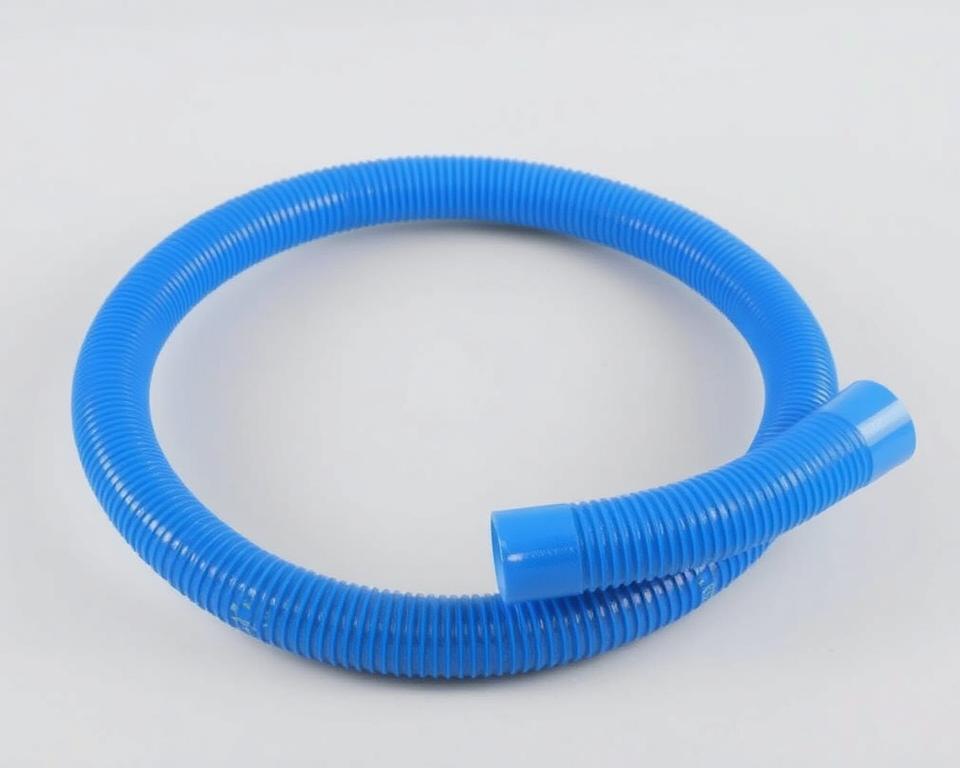Your Complete Guide to PVC Pipe in Compressed Air Systems
You might be surprised to learn that a failure in a compressed air system can unleash power on par with dynamite. Countless operations remain oblivious to the risks of certain piping systems they employ. Read on to discover why PVC air lines choices demand top-tier safety.
Even as interest rises, OSHA bans these materials for above-ground compressed air. Oil contact and repeated temperature swings degrade these pipes, risking sudden ruptures. Even at “safe” pressure ratings, the risk of explosions remains high.
For reliable alternatives, Installation Parts Supply offers durable solutions like aluminum. Using approved materials saves you from fines and enhances safety. Let’s explore how to build a safer system.

Key Takeways
- OSHA prohibits specific piping for air lines because of blast hazards.
- Pressure ratings drop as temperatures fluctuate.
- Brittleness worsens over time, increasing failure risks.
- Switching to aluminum vastly improves safety.
- Spending on correct materials avoids penalties and injuries.
The Risks of PVC in Air Compressor Lines
PVC makers caution never to employ it in high-pressure air setups. A breach in a pressurized air line unleashes explosive power, unlike water. This makes material choice critical for safety.
- Brittleness: Cold snaps make pipe walls brittle and prone to cracking.
- Adhesive failures: Oil contamination and heat cycles break down glue bonds.
- Misleading ratings: Pressure capacity drops 50% at 110°F—most workshops exceed this.
OSHA cites a $110,000 fine after a facility’s piping shattered, injuring workers. The “heat of compression” further reduces safe operating limits, a factor often overlooked in ratings.
“Above-ground use of certain plastics for compressed air violates OSHA standards due to explosion risks.”
Metal alternatives fail more predictably, bending rather than fragmenting. PVC shards fly far and fast, causing collateral damage.
Constant temperature swings in shops speed up pipe aging. A decade’s UV and chemical attack weakens plastic, so small leaks too often balloon into disasters.
Recommended Piping Materials for Compressed Air
Aluminum piping systems outperform traditional options in both safety and efficiency. They leak 90% less than black iron, making them ideal for today’s shops. Their lightweight design and corrosion resistance make them ideal for long-term use.
Snap-together modular aluminum cuts installation hours. Prebuilt snap-together aluminum runs come from Installation Parts Supply. One auto factory trimmed labor hours by 40% via aluminum retrofits.
- Copper: Best for cleanrooms due to natural antimicrobial properties. Requires soldering expertise.
- Stainless Steel: Resists rust in humid areas like coastal workshops.
- ABS/HDPE: Plastic choices like ABS or HDPE handle harsh chemicals.
“Our aluminum retrofit reduced energy waste by 15%—paying for itself in 18 months.”
Don’t ignore torque specs. Cracks from overtightening and leaks from under-tightening are common. Stick to recommended 25–30 ft-lb torque for aluminum.
Use NSF-certified materials when air quality is critical. Always match materials to your environment’s demands.
How to Choose the Right Piping Material for Your Needs
Balance budget, safety, and performance when choosing pipe. One plant slashed $12k per year by adopting aluminum lines. Here’s how to make the right choice.
| Material | Cost (per ft) | Maintenance | ROI Time |
|---|---|---|---|
| Aluminum | $8.50 | Low | 18 months |
| Black Pipe | $5.00 | High | N/A |
| Copper | $10.20 | Medium | 24 months |
Temperature matters. From arctic chills to high heat, aluminum outperforms. Use stainless steel where solvents are present.
Pro Tip: Use leak-loss math to estimate ROI. A 10% leak in a 50 HP system wastes $3,500 yearly.
- Don’t undersize—pick pipe rated at or above your compressor’s PSI.
- Check OSHA compliance for weld inspections and pressure tests.
- Contact Installation Parts Supply for a no-cost audit.
“Our aluminum retrofit cut energy waste by 15%—paying for itself in 18 months.”
DIY installations work for small shops, but professionals ensure leak-free joints. Check warranties—some pipes include decade-long coverage.
Final Thoughts
Choosing the right materials for your compressed air setup isn’t just about cost—it’s about safety. Studies show 92% of failures happen in older systems, often with dangerous results. With 99.8% uptime, aluminum is the clear long-term choice.
Don’t forget:
- Never use pipes that can fragment violently.
- Opt for corrosion-resistant metals like aluminum or stainless steel.
- Failing to comply can cost you big in fines and claims.
Ready to upgrade? Get instant quotes and special offers from Installation Parts Supply. Request your free template or emergency service today.
Make safety your piping priority—act today.
